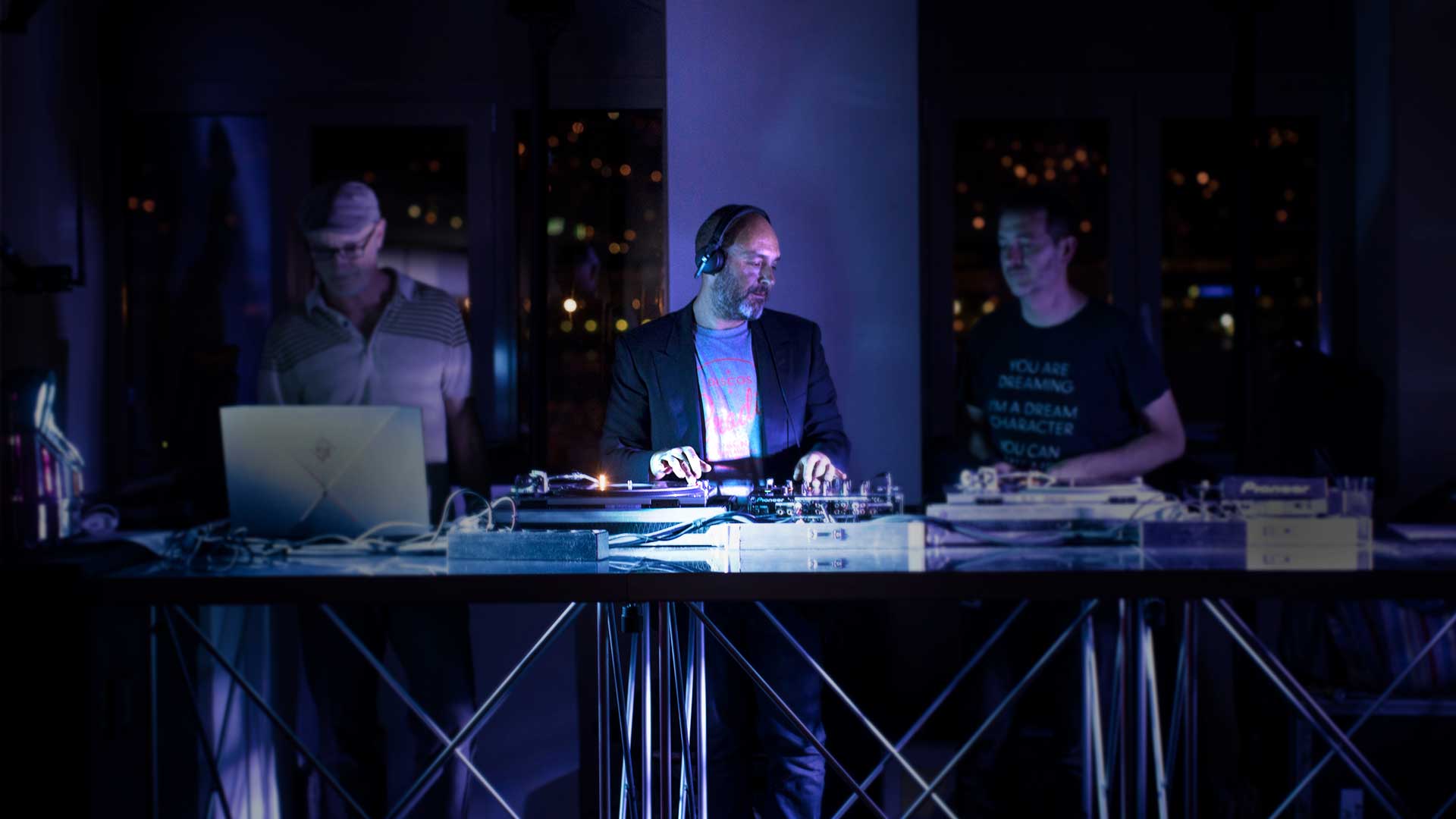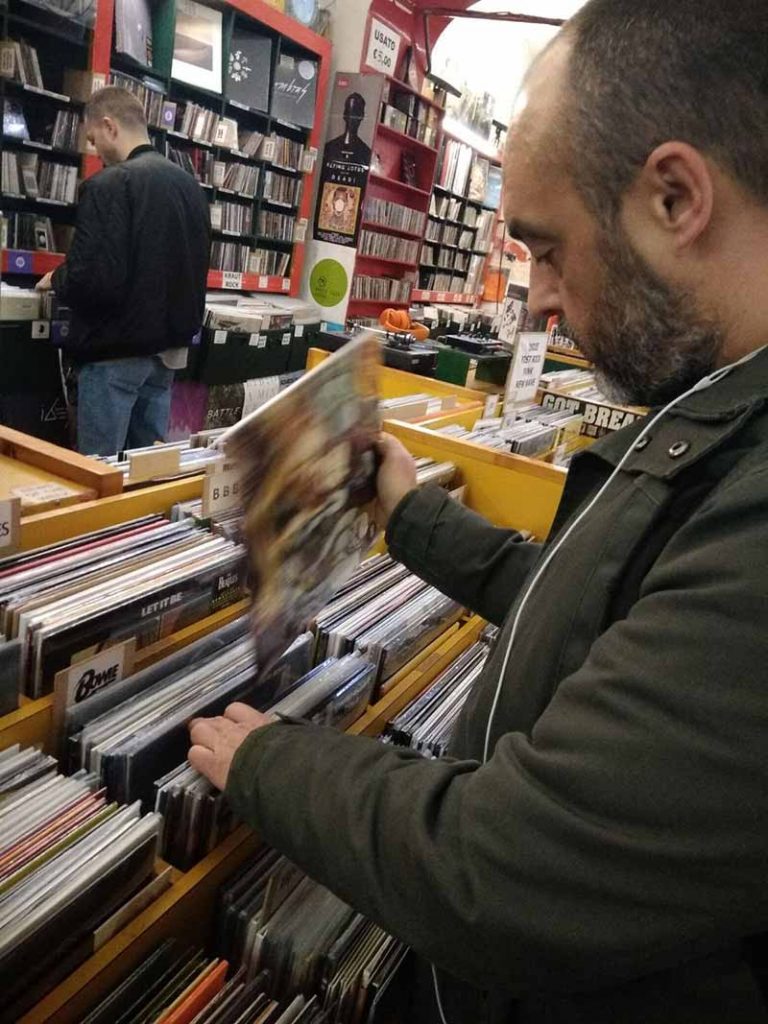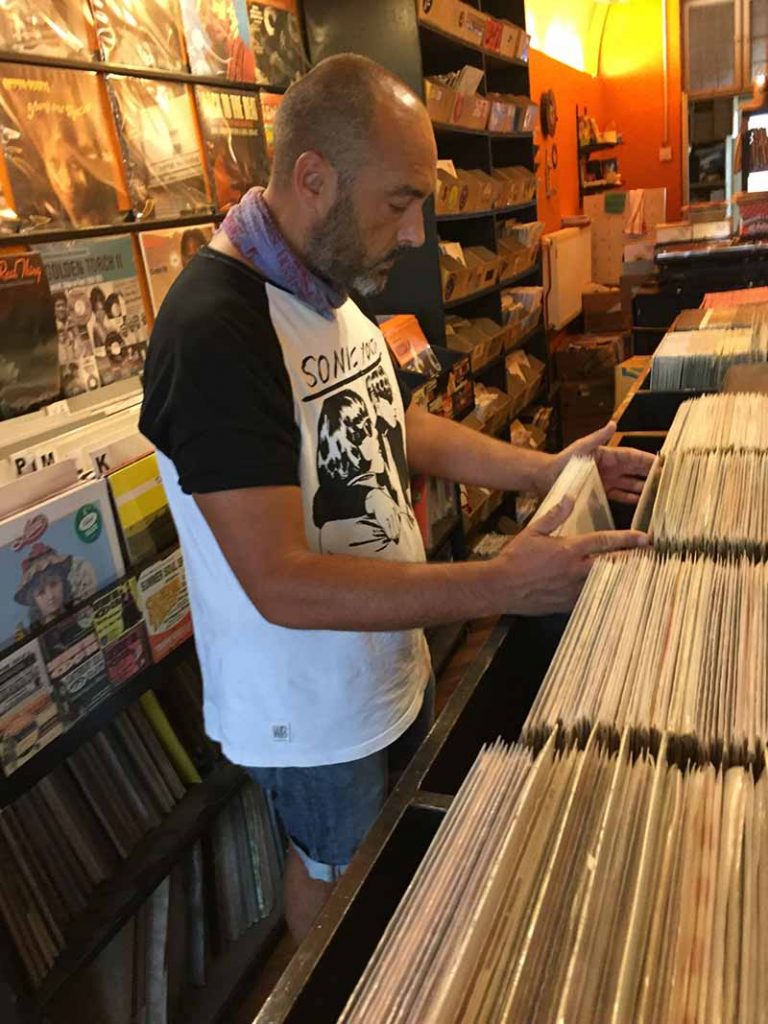
Bringing sound to a fashion show means discovering the perfect matches that will underline the inspirations and emotions of the designers. It is a long quest for the perfect beat and it has to fit into a coherent flow, capable of releasing the impact of the different projects. The mastermind fitting the ITS fashion show soundtrack pieces of the puzzle together is Gianluca Guerra, aka DJ Jazza Electrosacher. He has been developing and mixing the music for the ITS fashion show for almost 20 years now, working side by side with ITS Founder & Director Barbara Franchin and Director Assistant Michele Colucci.
Studying the fashion projects, grasping their meanings and translating them into sound starts from a meticulous research in a wide variety of musical genres looking for the “most proper” tracks. The soul of these tracks is two-fold: they often sound unmistakeably ITS (distorted, scratched, somehow romantic, electronic, passionate) while fitting the collection they are paired to.
One thing to bear in mind is that the length of the ITS catwalk shows is far longer than traditional shows: we’re talking 35 to 40 minutes, when a fashion week slot would last 15. So besides choosing and mixing/editing the tracks, the coherence, the structure and the overal ability of the music flow to entertain the audience also has to be kept in high consideration.
A SOUNDTRACK FOR A FASHION FILM
ITS 2020 posed an entirely different challenge. The soundtrack had to be conceived not for a catwalk live show, but for a fashion film. This pandemic driven choice meant facing far stricter policies for the music tracks selections. We were forced to research in an entirely different basin, with a limited freedom of choice. At the same time, each collection – which in the case of ITS 2020 included accessories and jewellery as well as the special projects with Lotto and illycaffè – worked as single timecapsules each with their own track. has to be chosen from an entirely different, and smaller, basin, limiting the freedom.
To dive deeper into what – we hope – was a singularity in the ITS universe, we sat down with Jazza to talk about and a process that turn out to be equally fascinating.
THE ITS STYLE
ITS: Through the years the process which leads to the creation of the ITS soundtracks identified as kind of “ITS Style”. The track sequence shapes a mood, sharing a vibe that identifies the ITS universe. How would you describe this style, and can you name tracks or artists which best represent it?
Jazza: It’s totally true! There’s a common thread which got more and more defined through the years. It is also true that this is not an easy concept to define. It is something elusive, mutable, that still maintains an identity. During our meetings we do sometimes burst out and say “this is an ITS track!” Perhaps the best way to describe it is “a track that rises emotions”. An electronic sound, fresh and young as the ITS contestants are. It conveys energy, awareness and a splash of melancholy too. If I were to pick an artist I think it would be Sascha Ring (Apparat/Moderat), capable of switching from a techno dj set to an unplugged set in a theater, to an indie/rock vibe concert.
FINDING THE TRACKS
ITS: Working on the final soundtrack mix includes researching the finalists, their projects, even what they post on their social networks about their collections. Anything you can find that provides you with a perception of their personalities and visions. Share with us how this works and how it evolved since you started collaborating with ITS.
Jazza: My work on ITS soundtracks actually has no off-periods. I am a huge music listener, a music addicted. I take notes of songs that impress me (not just those I like the most). Ten years ago I used to have an actual notebook, I now just save the tracks on Spotify. I create a number of playlists spanning quite a large spectrum of genres, from movie soundtracks to underground dance. When I reach 25/30 tracks I share the playlist with Barbara and Michele, asking them to let me know which ones they liked most. Barbara often goes for the tearjerkers, the most emotional ones… 🙂
Then comes a second stage when we have the finalists, their projects and their concepts. The portfolios are a fantastic source of cultural references, with amazing stories. I get completely absorbed. That’s when the “fashionista DJ” phase kicks in, with the goal of matching music and collections. Sometimes the match comes naturally, sometimes it turns into a more complicated process. Peculiar projects require a customized research. Once this phase is done and we have a selection of, ideally, more than one track for each collection, it becomes a game of interlocking. Before the pandemic we used to meet at Barbara’s place, sharing a good pizza and long listening sessions, brainstorming “on the build”. These meetings broadened my approach to track listening, and taught me how to search for different elements, things I was not used to perceive. The challenge is to establish a strong relationship with what you will be describing via sound, creating a music context that adds a 4th dimension to the collections.
What does a track need to get into the final selection? Which factors are involved?
There are multiple factors involved, but these are all on a secondary level. The music we choose first and foremost has to give me something special.
FISHING MUSIC IN A SMALLER BASIN
ITS: In terms of creative direction what changed in 2020, being forced to research inside the smaller royalty-free basin to find the tracks?
It revolutionized the process. Moving from a live event to a fashion film forced us to source music from dedicated platforms, selling music legally fit to be publicly broadcasted via social networks/live streamings. My biggest concern was dodging anonymity. Imagine yourself picking from a huge library where all sections are renamed. The books don’t mention the authors, and you’re looking for volumes with no chance of being helped. The genre filters are useless, and most of the catalogue is composed of very similar books. A nightmare! So I had to build myself a fresh new interpretational grid. Most of the available music was standardized for commercial or web advertising purposes, meant to ignite a quick and short spanned response, without that personality, that deep feeling I am always searching for. Luckily, there were some hidden gems up to be discovered and crate digging is the best moment for DJs. It’s not the same as browsing dusty vinyls with your fingers, but it does provide satisfaction nonetheless.
In the end I edited most of the songs, added some beats and samples, made some cuts to create the right atmosphere. I profited in a creative way of what was initially a restriction.


CINEMA, FASHION AND MUSIC
ITS: Movies, fashion and music are interacting artistic universes, creative languages constantly on a conversation. You have an academic education in cinema, what is your opinion on these connections and which shared inputs can you see?
Jazza: I believe creative languages speak to each other. Nowadays this happens faster, at the pace of ADSL fiber. But this exchange has always been there. Fashion met cinema in the twentieth century, connecting since the very beginning and following its development. It was love at first sight since both focus on vision. Once they began communicating cinema turned into a channel to spread fashion and style, thanks to its wide popularity. And cinema was (and probably still is) an almost unlimited source of visual references for young creatives. When we define an outfit as “Fifties” we refer to images we have learned from the movies. Giorgio Armani said he would have been a director if he did not work as a fashion designer. I can go further: how important was it for Audrey Hepburn to work with Billy Wilder for “Sabrina” (Academy Award for Best Costume Design) or with Blake Edwards and Hubert de Givenchy (costume designer) for “Breakfast at Tiffany’s”? We can go on and on in finding intersections, as they continue to happen.
We’ve seen a lot of movies in recent years about the fashion world (from “The Devil wears Prada” to my beloved “Zoolander”), same with fashion documentaries (“Valentino the last emperor”, “McQueen”…). This is the signal of a current process of fashion historicization.

